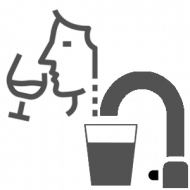- HOME PRODUCTS
- FITTINGS TUBES
- WATER FILTRATION
- OUR SOLUTIONS
- ANTI PESTS
- GARDEN
- Our Blog
 |
 |
 |
 |
 |
 |
 HOME PRODUCTS
HOME PRODUCTS MAINTENANCE PRODUCTS
MAINTENANCE PRODUCTS- Domestic Products
- HOME FRAGRANCES
- Maintain wooden furniture
- Maintenance Leather
 INSECTICIDES HOME
INSECTICIDES HOME- Insecticides Inside
- Ecological bait traps
- Insecticides against Flies
- Insecticides Mosquitoes
- Insecticides Aerosols
 Insecticides Outside
Insecticides Outside LED BULBS
LED BULBS- OUTDOOR LIGHTING
- LED TRANSFORMERS
 FITTINGS TUBES
FITTINGS TUBES Fittings Inch
Fittings Inch- Connections 1/4 Inch
- Connections 1/4 Inch - Beer
- Fittings 5/16 Inchs
- Fittings 1/2 Inchs
- Brass Fittings
 Food tubes
Food tubes- 1/4 Inch Food Tube
- 3/8 Inch Food Tube
- 1/2 Inch Water Tube
- Tube 4 & 5 MM
- 6 MM PE Tube
- 8 MM Water Tube
- 10 MM Water Tube
- 12 MM Water Tube
- Tube Water 15 MM
 Fittings Metric
Fittings Metric- Fittings 4 mm Misting
- Fittings 8 mm drinking
- Fittings 8mm Drinking
- Fittings 10 mm Air - Water
- Fittings 12mm Campers
- Fittings 15 mm Mobile-home
- Fittings 16 mm Watering
- Fittings 22 MM Home
 BREWERY FITTINGS
BREWERY FITTINGS Polypropylene fittings
Polypropylene fittings Connectors TEFEN
Connectors TEFEN- Compression Connector
- Elbow Fittings Tefen
- Straight fittings Tefen
- Fittings Threaded Tefen
- Fittings TE - Y Tefen
 Nipples - Flexibles
Nipples - Flexibles- Nipples - Flexibles
 CONNECTION KITS
CONNECTION KITS
 WATER FILTRATION
WATER FILTRATION FILTER CARTRIDGES
FILTER CARTRIDGES- Polypropylene Cartridges
- Wound Cartridges
- Pleated Cartridges
- 316 Steel cartridges
 FILTRATION SYSTEMS
FILTRATION SYSTEMS- Home Water Filtration
- Mobile Filters Stations
- Industrial Filtration
- Big filter water station
- Ultraviolet Water Treatment
- Filter material
 DRINKING WATER FILTRATION
DRINKING WATER FILTRATION- Purifiers Potable water
- Domestic Reverse Osmosis
- Micro-filtration UF water
- Compact Purifiers
- Cartridges Everpure
- Filters Faucet MonH2O
- Filtration Fridge-Fountains
- Cartridges on line
 CARTRIDGES - MEMBRANES
CARTRIDGES - MEMBRANES- Impurity cartridges
- Carbon cartridges
- Osmosis membranes
- Specific filtration
- Cartridges PENTEK
- Filter Cartridges
- Filters Big Blue
 FILTER HOUSINGS
FILTER HOUSINGS- Transparents filters
- Opaque Filters
- Industrial Filters
- Filter housing Big Blue
 WATER TREATMENT
WATER TREATMENT- Media Filtration
- Anti-leak systems
- WEST INDIES FILTERS
- SYSTEM ANTI LIMESTONE
- Pressure tanks
- purification water filtration
 FILTRATION ACCESSORIES
FILTRATION ACCESSORIES- Osmosis Accessories
- Solenoid valves 24V - 220V
- Accessories Filter Housing
- Joints - Mounting
- Mounting Bracket - Keys
- Valves 3-way
- Maintenance - Tests
- Spare parts Fleck
 OUR KITS
OUR KITS- KITS CARTRIDGES
- CARTRIDGES BOXES
- KITS CARTRIDGES BIG
 OUR SOLUTIONS
OUR SOLUTIONS Turbidity Solutions
Turbidity Solutions- drink solutions
- Home Solutions

- Drink solutions
- Home Solutions
 Water Taste Solutions
Water Taste Solutions- Beverage Solutions
- Home Solutions
 Chemical solutions
Chemical solutions- Beverage Solutions
- Home Solutions
 Bacteria solutions
Bacteria solutions- drink solutions
- Home Solutions
 ANTI PESTS
ANTI PESTS PRIVATE ANTI-PEST
PRIVATE ANTI-PEST REGULATED BIOCIDES
REGULATED BIOCIDES- Rodenticides Blocks
- Rodenticides Granules
- Rat poisons Communities
 KILL HARMFUL BUILDINGS
KILL HARMFUL BUILDINGS- Insecticides Breeders
- insecticides stables
 GARDEN
GARDEN GARDEN PESTS
GARDEN PESTS GARDEN PRODUCTS
GARDEN PRODUCTS- Plant Protection
- Garden fertilizer
 BAITS & TRAPS
BAITS & TRAPS- Traps Wasps - Flies
- Traps Caterpillars
- Butterfly Traps - Moth
- Stuck Traps
 BIOCONTROL WEEDKILLERS
BIOCONTROL WEEDKILLERS
| » » Water Taste Solutions |
 |
Choice Delivery at Home or Pick-Up |
 |
| E-SHOP CERTIFIED PAYMENT SSL SECURE |
 |
 |
Inscrivez-vous pour ne manquer aucun bon plans :
- NOUS CONTACTER
- MODE & FRAIS LIVRAISON
- NOS CERTIFICATIONS
- Legal information
- Terms and conditions
- Delivery / Payment
- Sitemap
Contactez-nous !
Diproclean.com
DIPROCLEAN Eurl
SWEN PARC - BAT D4
Chemin Bastide Blanche
13127 VITROLLES
04.42.07.69.30
This site uses cookies to offer you an optimized and personalized user experience, to make our audience statistics, or to offer you advertising and offers tailored to your desires and interests. You can, however, uncheck the cookies that you do not want us to use.
Technical cookies are necessary for the functioning of the site and can not be disabled. However, they are only collected and used during your presence on this site.
HOLYDAYS 1st to 12 MAY
We inform you that we will be closed from May 1st to May 12th.
For this reason, we will ship registered orders until
Saturday April 26 at midnight.
After this date, orders will be prepared and shipped
from Monday May 13.
Possibility of shipping by CHRONOPOST until Monday 12H.
















































